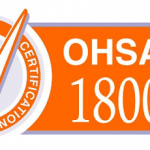
Are you aware of the environmental regulations that your company must follow? Environmental compliance audits can help ensure that your business stays within legal boundaries. Read on to learn more about the importance of environmental compliance audits.
Importance of Environmental Compliance Audits
Environmental compliance audits are important for ensuring that organizations comply with relevant environmental regulations and standards. These audits are typically conducted by qualified environmental professionals who review an organization’s operations, procedures, and records to assess compliance with applicable laws, regulations, and industry standards.

Main Goal of an Environmental Compliance Audit
The main goal of an environmental compliance audit is to identify potential environmental risks and violations and recommend corrective actions to prevent future violations. Some of the key areas that may be reviewed during an environmental compliance audit include air emissions, water quality, hazardous waste management, and environmental permits and reporting.
Audit Process of Environmental Compliance
The audit process typically begins with a planning stage, where the auditor will review the organization’s environmental permits, regulatory requirements, and other relevant documentation. This is followed by a site visit, where the auditor will inspect the facility, review records, and interview staff members to gather information about the organization’s environmental management practices.
Once the audit is complete, the auditor will prepare a report detailing any non-compliance issues and recommendations for corrective actions. The organization will then have an opportunity to address these issues and implement the recommended corrective actions.
Preparing for an Environmental Compliance Audit
Proper preparation for an environmental compliance audit is crucial. This includes developing an environmental compliance plan, training staff, and conducting internal audits. Developing an environmental compliance plan involves identifying environmental regulations that apply to the business and implementing procedures to ensure compliance. Training staff on environmental compliance requirements helps to ensure everyone is knowledgeable and understands their roles and responsibilities. Conducting internal audits allows businesses to identify potential violations and address them before an external audit occurs.

Conducting an Environmental Compliance Audit
During an environmental compliance audit, auditors review various aspects of the business to ensure regulatory compliance. This includes reviewing records, inspecting facilities, and interviewing employees. The auditor may identify potential violations, and the business will need to develop corrective actions to prevent future occurrences.
Common Environmental Violations
There are several common environmental violations that businesses should be aware of, including improper waste disposal, air emissions, water discharges, and hazardous material storage. These violations can result in fines and legal action if not properly addressed.
Corrective Actions for Environmental Violations
If an environmental violation is identified during an audit, corrective actions must be taken to prevent future occurrences. This includes developing a plan to address the violation, implementing the plan, and monitoring the effectiveness of the plan.
Challenges of Environmental Compliance Audit
Conducting environmental compliance audit can be challenging for businesses. This includes the cost of conducting audits, ensuring staff is knowledgeable about regulations, and ensuring corrective actions are implemented effectively.

Tools for Conducting Environmental Compliance Audit
Several tools can assist businesses in conducting ecu, including audit checklists, software solutions, and third-party auditors.
Benefits of Environmental Compliance Audits:
Avoidance of Regulatory Penalties:
Environmental compliance audits can help organizations avoid fines, penalties, and other legal repercussions for non-compliance with environmental regulations.
Improved Environmental Performance:
Environmental compliance audits can help organizations identify areas where they can improve their environmental performance and reduce their environmental impact.
Improved Reputation:
Organizations that demonstrate a commitment to environmental compliance through regular audits can improve their reputation with customers, suppliers, and other stakeholders.
Increased Efficiency:
Environmental audits can help organizations identify areas where they can improve their operational efficiency and reduce costs associated with environmental compliance.
Conducting an environmental compliance audit
Conducting an environmental compliance audit involves several steps. These include:
- Planning the audit: This involves defining the scope of the audit, identifying the regulations that apply, and developing an audit plan.
- Gathering information: This involves collecting data on the company’s environmental performance, including emissions, waste generation, and resource use.
- Conducting site inspections: This involves visiting the company’s facilities to assess environmental compliance and identify potential risks.
- Analyzing data: This involves reviewing the data collected and identifying areas of non-compliance and opportunities for improvement.
- Reporting findings: This involves documenting the audit findings and developing a corrective action plan.
Nutshell
Overall, environmental compliance audits are an essential tool for organizations to ensure that they are meeting their environmental obligations and operating in a sustainable manner. By conducting regular audits and implementing recommended corrective actions, organisations can demonstrate their commitment to environmental compliance and improve their environmental performance.




